Chapter 2
Starting a Studio or Working for Someone Else
There are at least two options when building a design career: working for someone or working for oneself. The former requires getting hired by an existing studio or firm; the latter, and more complicated option, is to start your own business. Some designers take this leap immediately out of school; others acquire more experience through employment with businesses on which they might model their own.
Lynda Decker
Mapping Out the Future
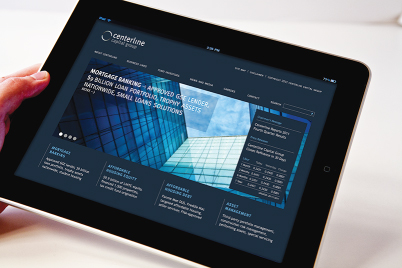
Centerline Capital Website
Creative Director: Lynda Decker
Design: Michael Aron, Susanne Adrian, Bradley Cushing
Programming: Michael Aron and Bradley Cushing
Why did you start your own design firm?
A friend said, “Lynda, stop complaining about your job. I'm tired of hearing this. Start you own business. I did it, you can do it; I will help you.” And so, for the next few hours, we kept the restaurant open and mapped out what I would do, what type of clients I should go after, how much money I needed to get started, and then he made me pick a date to quit my job. We worked out detail after detail. I was terrified but exhilarated.
Was there a focus that you had in mind, or was it general at the outset?
I had worked in both advertising and graphic design before starting my firm. My clients were large corporations such as Chase Manhattan, IBM, and CBS. My friends encouraged me to start building clients based on the work I had done and also to speak with anyone I had worked with in the past. So I spoke to financial companies—they were assigning tons of work to designers in the late 1990s, and some of those assignments were really fun—there were magazines, lavish brochures, and insanely elaborate party invitations—this was the era of fancy paper, twigs used for binding, and lots of die cutting.
How would you describe the style or form your work takes?
My work has evolved over the years, and I've noticed that as I matured, it has become more simplified, especially in relation to typography. I'm sure it is a reaction to the complexity of life in the twenty-first century—I have a desire to strip away anything that is nonessential. I also have a strong interest in photography, which has an ability to bring humanity to subjects and reach people on an emotional level. Recently, I decided to return to graduate school to improve my writing and research skills. This, of course, is providing another level of influence on my work—I'm affecting content more. If I had to sum it up, my work has clarity; it is clean, simple, and uses a great deal of photography.
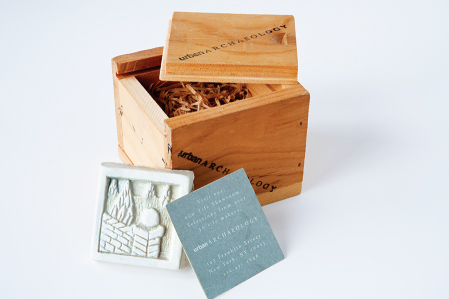
Urban Archaeology Ad Campaign
Creative Director: Lynda Decker
Design: Lynda Decker, Kevin Lamb, Natalie Marshall
Photos: Ken Skalski
Do you inject personality into the design, or is it devoid of it?
I think everyone injects personality into his or her design work; as an interpretative form of expression, it is unavoidable. I would say my work reflects my clients' personalities, but in truth, the work is a result of a blend of my personality and theirs.
How much has the digital world entered what began as a print design business?
The digital world has completely changed my business as well as the design industry. Some of these changes are great, and others are painful. I began my career in an era of glue and razors, and I couldn't be happier to escape the drudgery of a pasteup. Thank God the days of having to change the leading of a book with a ruler and razor are over!
Technology has made so many forms of expression accessible—it's easy to experiment with photography—there's no cost of film and processing to hold you back. Video equipment and editing software are relatively affordable—you are only limited by your imagination. You can revise a website easily, publish a book using Lulu or some other service —digitally print a new card overnight. I can tweet a writer and tell him I thought he wrote a great article, and he can tweet a note of thanks back in minutes. We can do so much now that was never possible before.
What about the economics of a design business?
Fees are now much lower, and there is a greater level of competition for the available work—it's harder to sustain a business. This has created an environment where designers often do not like to say the word design in the context of their work. “Graphic designer” has morphed into “brand strategist” or some other title that implies more importance. Few designers would now refer to their businesses as a “studio,” which was a popular term 20 or 30 or 40 years ago. One will see the terms design firm, agency, office, or design practice more often now. Design industry business consultants advise their clients to specialize in a market segment to differentiate themselves.
Do clients want more? Are their expectations reasonable?
There is an expectation from many clients that technology should make everything very inexpensive. Writers are now asked to contribute to blogs for free, stock photography can be almost free on certain websites, and I think you can buy a logo for $5.00 or less online. I have concerns that all of us who are in the creative class are being seriously devalued.
While technology has removed a portion of the labor from our work, we still have to solve problems and come up with ideas, and those ideas have a value, and designers, writers, and photographers should be fairly compensated. Technology fabricates; it facilitates, but it is not a substitute for ideation and creativity.
What today do you look for in hiring designers?
First, designers have to have a terrific portfolio of work. Second, they should have language skills—the ability to communicate with clients, research a subject, or write an articulate e-mail is important. I will not let anyone in our office use “Lorem ipsum” and treat text as just another element on the page. As a result, most of the designers I hire have the ability to write headlines and frame outlines to create a fully integrated design concept.
After talent, personality is a key to success—so we look for enthusiasm, people who are excited about work and are motivated to do their best. We look for a desire to learn, curiosity, and a sincere desire to contribute to the team. And of course they should be nice.
I place technical skills after personality—we can teach skills, but talent and drive are qualities that come from within a person. That said, every designer should be adept in all of the Adobe programs, and more and more we look for designers who can code as well as design.
Do you prefer to hire mature designers?
Diversity is the most important thing to achieve in an office with a team of designers. I've made tons of hiring mistakes over the years, so the following is my personal experience: When our office is all male, it becomes filled with too many jokes about bodily functions. When it is all female, it's too emotional. There are tons of tears. I'm really sorry to resort to stereotypes; this is maddening, but true. When the office is too young and inexperienced, mistakes happen and things can get chaotic quickly.
The best team is one that is a mix of gender and age, and when there are people from other cultures. For the most part, the best of all worlds is when you have younger designers to bring tons of energy and new ways to do things, and mature designers to provide guidance and mentorship. When the boys and girls are equally mixed, they stay on good behavior—no weird jokes and no tears—the boys don't want to sound crass, and the girls don't want the guys to think they are weak. It's lovely. There should be a rule: no crying in graphic design.
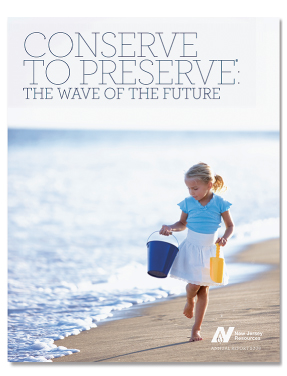
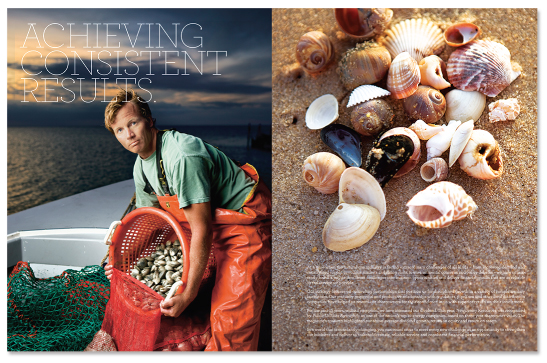
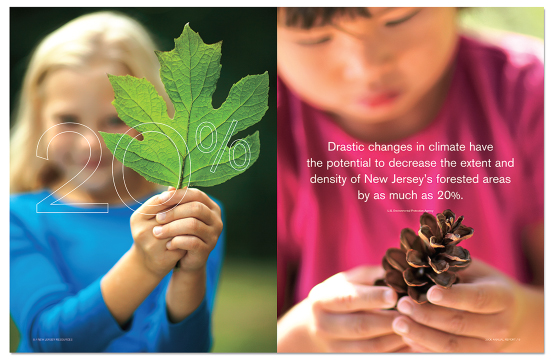
New Jersey Resources
Creative Director: Lynda Decker
Design: Lynda Decker, Carrie Leuci
Photography: John Madere
Fernando Music
From Boss to Employee

MTIV Process, Inspiration and Practice for the New Media Designer
Client: Hillman Curtis
Creative Director: Fran Gaitanaros
For 13 years you ran your own design firm, Rooster, first, why did you call it Rooster and what type of work did you do?
The Rooster Design Group was a studio I ran with a partner. One of our first challenges was to come up with a name that we could both feel ownership of. Calling the studio some mash-up of our monikers felt like a cop-out, not to mention old-fashioned. In a lucky twist of fate, we realized that we were both born in the Chinese year of the rooster. Rooster was a multidisciplinary design studio that worked on everything from identities to brochures and websites to package design. Over 13 years we had clients ranging in scale from Fortune 500 companies and upscale art galleries to start-ups and nonprofits.

Warby Parker Class Trip
Client: Warby Parker
Creative Directors:
Andy Spade, Anthony Sperduti
Photographer: Devon Jarvis
What did you like about running your own business?
There is no question that the best thing about running any business is freedom.
What was the least enjoyable aspect of the work?
Although we said we were optimized for happiness, sometimes making tough business decisions involving staff and working with clients who aren't your cup of tea can make being the boss no fun at all.
How many employees did you have? And what did you look for in a designer?
Our office held steady at eight, although we took on freelance staff as projects required. Because we tried to work across disciplines as much as possible, I always appreciated a designer with these innate qualities: a good eye, great taste, curious intelligence, and what Danny Meyer calls the “excellence reflex.” In his book, Setting the Table, he says: “The excellence reflex is a natural reaction to fix something that isn't right or to improve something that could be better.” If a candidate has these qualities, he or she can learn to be a great designer.
Would you say that running a business was an added layer of stress or simply part of what you signed on for?
Running a business was a layer of stress I willingly signed on for. I won't say I knew how hard it was going to be, but on the flip side I also couldn't have imagined how gratifying it would be either.
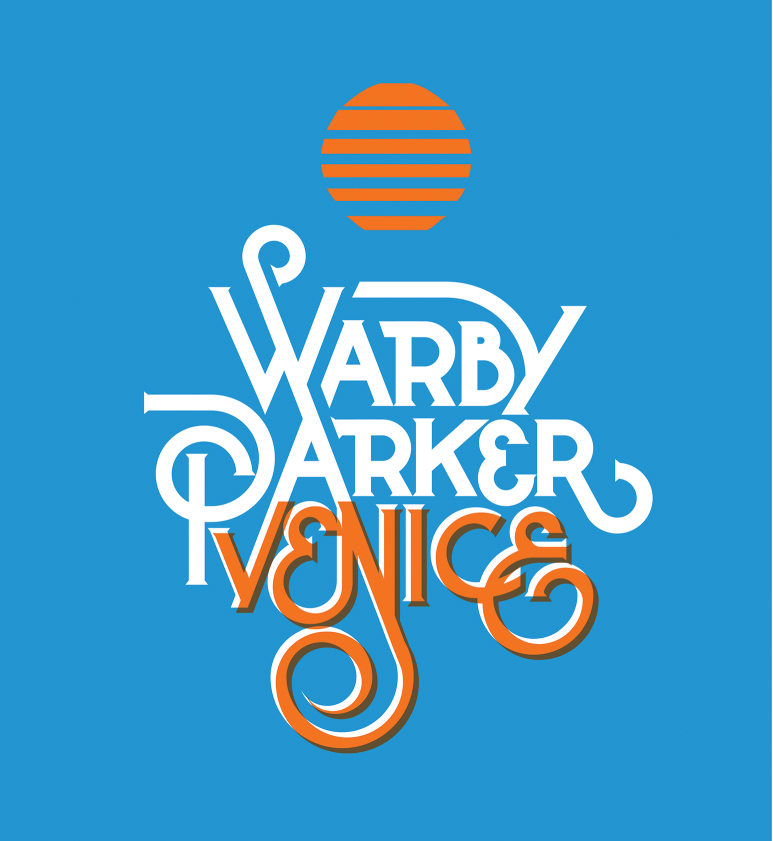
Warby Parker Venice
Client: Warby Parker
Creative Director: Anthony Sperduti
Art Director: Danny Demers
In 2013 you closed your firm and joined Partners & Spade. First, what is Partners & Spade? And why did you go from boss to employee?
Partners & Spade is many things. It began as a way for its founders to work with the brands and individuals they most admired. Since inception, the company has evolved and grown to function as a design firm, creative consultancy, gallery and storefront, advertising agency, and brand incubator while avoiding becoming just one of those things.
Working with world-class brands on some of the most prestigious initiatives without the day-to-day responsibilities of running a business is something I really enjoy.
What kind of work are you doing at Partners & Spade, and how different is it from running your own firm?
As a studio, Partners & Spade does many things but excels at giving a voice to brands. Describing how a company is going to look and feel, communicate, and ultimately behave is a great place to start because it means you get to make the rules. At Rooster we weren't involved with as many start-ups or new businesses; as a result, we did less work at the earliest planning stages.
At Partners & Spade, my role is to provide leadership and, represent the company. In this way there are many similarities, but there is still enough learning every day to make it interesting.
What are the advantages of working for this firm?
Prior to Partners & Spade, the founders met and worked together in advertising. In addition to creating traditional advertising campaigns, they went on to build, operate, and sell the Kate and Jack Spade brands. This experience gives way to an understanding about brand building that few studios possess. As it turns out, Partners & Spade is really good at creating, nurturing, and growing brands, which is what we enjoy doing for clients. I remember very early on my father telling me that if you like what you do every day, it isn't work—and that is the secret to a happy life.
Allison Henry Aver
Working Holistically
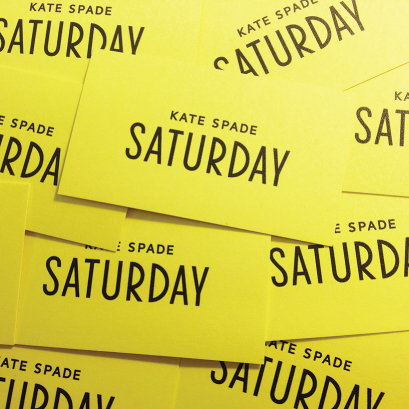
Kate Spade Saturday Business Cards
Creative Director: Theresa Canning Zast
Design Director: Allison Henry Aver
Designer: Kristie Malivindi
You had worked at design firms. What do you feel was the greatest attribute giving you the edge in becoming a design director?
I had worked in a small design firm called Number Seventeen for many years under the creative direction of Bonnie Siegler and Emily Oberman. Working there taught me to work fast, generate lots of ideas quickly, be comfortable transitioning to new concepts or project on a dime, and most importantly, realize that whether the project was naming an apartment building or designing title cards for a TV show, the creative thinking was still the same.
The term “graphic designer” felt like a misnomer for those of us working there. We worked so holistically with all our clients. We didn't just affect the design, but we thought about the content, the copy, and the experience. This was also reflective of the MFA Design/Designer as Author + Entrepreneur program at SVA, where I was a student, and where as designers we were encouraged work also as the author of our work.
This ability—to understand that my role is much more than a graphic designer—that I need to think like a marketer, see like designer, and understand messaging like copywriter— is what I find thrilling and exciting and challenging about this role. I also realize that I would never be in this situation if I had only been taught to “make something look pretty” and not read the words. Making something look great is extremely fulfilling—but I believe being able to want to care and curate an entire experience is what has helped me get where I am.
What do you do as design director of a fashion and style business?
As the design director for Kate Spade Saturday, I am responsible for directing all creative marketing work related to the brand—determining overall photography and brand direction related to the website, e-mails, campaigns, advertising, and social media as well as the voice and copy direction. I have a counterpart who is responsible for all product, and the two of us report in to the creative director.

Kate Spade Saturday Window Shops
Creative Director: Theresa Canning Zast
Design Director: Allison Henry Aver
Designers: Nikelle Orellana, Kristie Malivindi
Copywriter: Khira Jordan
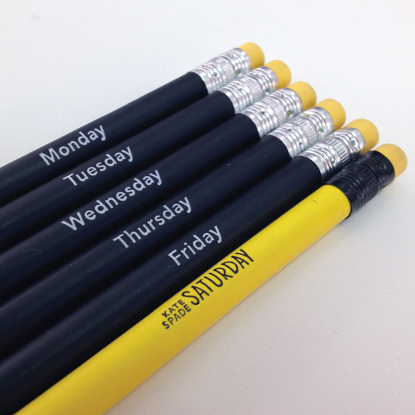
Kate Spade Saturday Pencils
Creative Director: Theresa Canning Zast
Design Director: Allison Henry Aver
Designer: Allison Henry Aver
How do you keep the design of Kate Spade Saturday fresh and on point with the brand's mission?
The brand's mission is to channel the spirit of Saturday seven days a week. When you think about it, that's pretty open ended, and there's so much fun content that can be created around this concept. The graphic design aesthetic of Kate Spade Saturday is fairly basic and utilitarian. I knew going into this we'd need parameters that could support the trends of fashion, a known colorful aesthetic and seasonal imagery. It's the imagery and copy writing that gives us our personality. And we have a lot of it!! Conceptualizing new seasonal campaigns, working with new photographers, trying out new technology in social media or on the site, or collaborating with outside creative partners are ways we keep the brand feeling fresh every season.
What has been your most challenging project? And the most satisfying?
In the summer of 2013, we worked with eBay to create shoppable storefront windows. eBay had developed the technology to allow a customer to shop from a very large monitor placed against a window, buy product from the interface, and then have it delivered by bicycle messenger within the hour.
The technology was cool, but it had no heart. For us, the challenge was “Why would you do this?” and “How do you make it feel cute and fun for our customer?” It's not like anyone really needs a beach towel in an hour. At first it felt like the technology was overpowering the experience and would turn off the girl we were trying to target. We spent a lot of time role-playing out the user experience and pretending we were the customers. We tried to create scenarios in which we would buy a sunhat and absolutely have to have it in an hour. Well—if you suddenly decide to have a picnic in the park, you might. Or you might need a jacket for the cold movie theater. From this we created stories about the product to give them a reason to be there, and it was this that gave the project its charm and made it a unique experience for us.
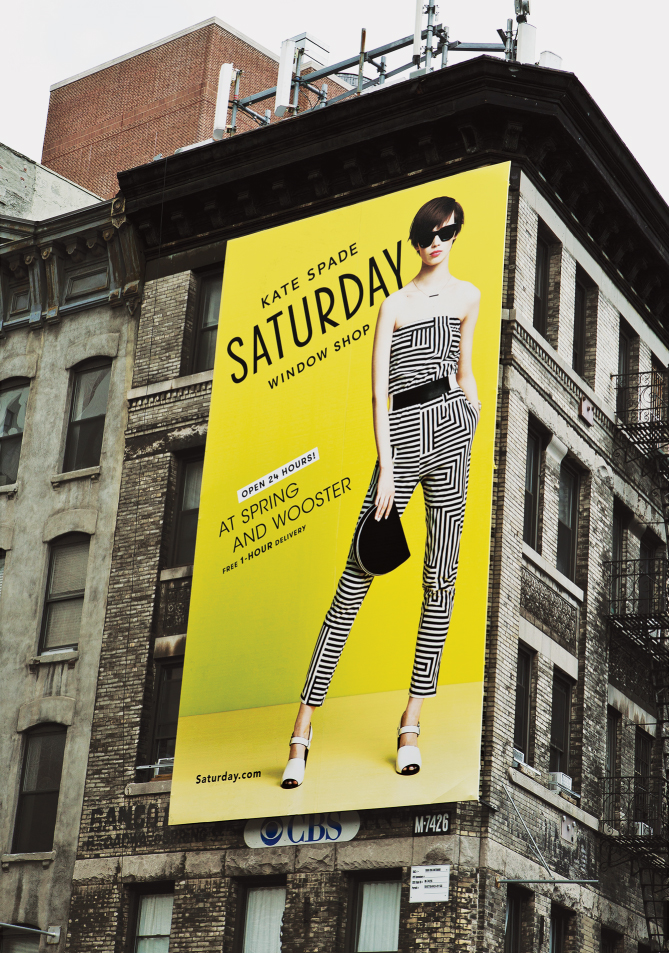
Kate Spade Saturday Window Shop Billboard
Creative Director: Theresa Canning Zast
Design Director: Allison Henry Aver
Photographer: Thomas Schenk
Designer: Allison Henry Aver
Copywriter: Khira Jordan
How much responsibility do you and your staff have for the brand?
One of the perks of working on a new brand and a small team is that we get to work on literally everything for the brand—from the price tag design and every individual tweet to the campaign photography to how the models look on our website and to much larger brand initiatives with outside partners like eBay and jetBlue. In our setup, the right hand knows what the left hand is doing, and thus the messaging and design in our all channels are fairly tight.
When you hire for your department, what do you look for in a candidate?
A strong designer, I feel, should be able to create strong, thoughtful solutions for any client—regardless of personal style—and I try not to be swayed by an aesthetic but rather look for a strong typography foundation, a respect and understanding of copy, and someone who shows an interest in creative problem solving versus just loving tweaking typefaces (although we do that, too). I also look for a strong cultural fit when hiring. I need people who love what they are working on, to be cheerleaders for the product, and in many instances be the target consumer themselves. If they like and get the brand—it's so much easier to create and design for it. It makes it fun!
Romain Rachlin
Creative Space
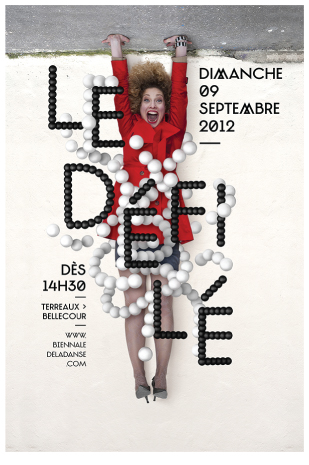
Lyon Dance Biennale Poster
Designer: Romain Rachlin
Art Directors: Romain Rachlin and Maxime Tétard
2012
Describe what you do.
Maxime and I are the “creatives”—Cyril is the account executive, while François is the IT expert. We like to think of our work as exploring the world of signs—signs that are graphic, abstract, poetic, explicit, typographic, black and white, and sometimes, though not too often, colorful. These signs are never gratuitous, but they are always imbued with style.
All four of you are members of the millennial generation, people who take the digital culture for granted. Yet, you work mostly in print. How do you explain your choice?
It is not exactly a “choice.” It sort of just happened. One print-based project led to another. We all come out of the same school, the Arts Décoratifs, where we have been nurtured with a love and respect of printed images and objects. It's part of our DNA.
That said, we are all technologically savvy. There is always a digital component to all our projects. It is usually a website. Nowadays, you cannot be a graphic designer and ignore this fascinating dimension of the visual culture.
How does the digital culture influence your graphic sensibility?
What do you mean by “digital”? If you mean the tools, they have practically no incidence in the way we conceptualize projects. Sure, they allow us to work faster and make communication with clients easier. However, the digital language is only one of the means of expression we use. We would rather play with physical objects than virtual ones.
Then there is “Floating.” The poster wasn't commissioned as such; it was originally a paper sculpture, a personal project. The fact that it has become a cult image is a fluke. How do you explain its appeal?
We are not sure that it's a cult image! Only time will tell. There has been a lot of press about it, but is the public really enthralled by this “campaign”? We don't know. The extreme visibility of the posters is oddly compelling. Their message is clear: Advertising budgets are down; the economy is in trouble.
We do not consider the posters to be “low-tech.” They are always displayed on brightly illuminated panels. Their design is deliberately geometric, as is most of our work. The patterns show small variations in the folded paper, to give the image a sensual dimension. For us, this “campaign” has been a defining moment, philosophically and aesthetically.
You often use data visualization as a communication tool in your work, as for example in the series of posters on filmmaking for the television station Canal+. Why this fascination with data visualization?
We design information systems the same way we design type. It has to do with our love of the language of “signs.” The example of the Canal+ posters is not typical, in fact. In this particular instance, we were asked to illustrate someone else's concept. The result is highly narrative, whereas we usually create more conceptual graphic systems, as we did for the Familistère exhibition or for the annual report of the CNAP (Centre National des Arts Plastiques).
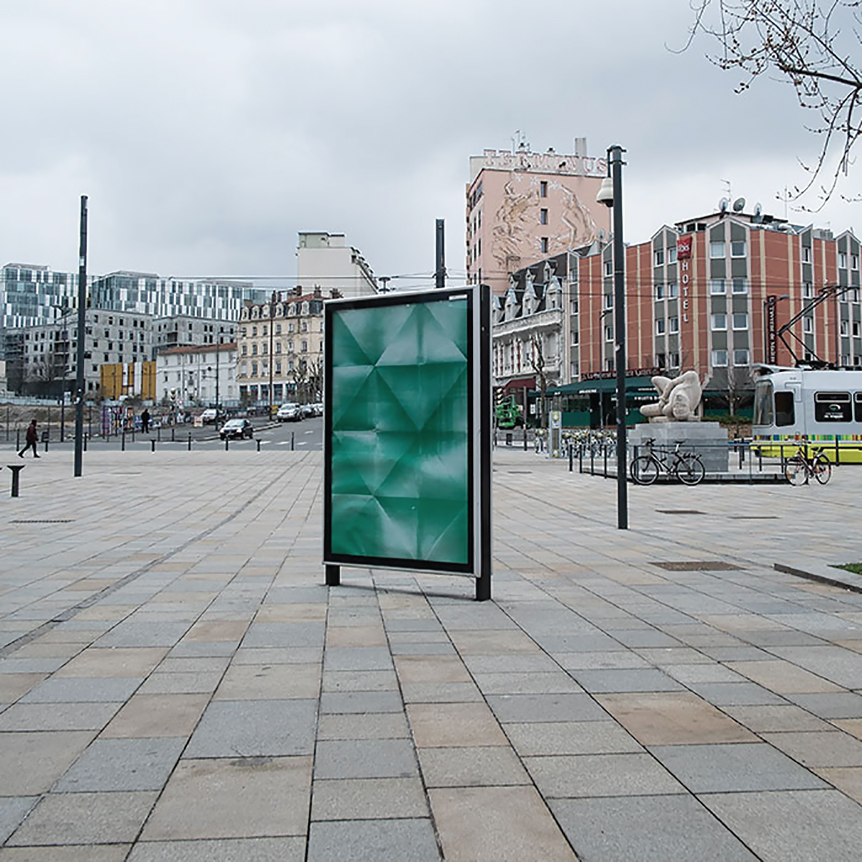
Floating
Metrobus
Concept: François Kenesi
Designer: Romain Rachlin
Art Directors: Romain Rachlin and Maxime Tétard
You often use minimalist typography for your posters, your signage systems, and your information panels—for the Pompidou Center in particular. Are you careful not to be “commercial”?
Yes, indeed, we favor a low-keyed communication style. We want it to be discreet, and we avoid at all costs marketing codes. We want the featured artist or artists to be presented in a neutral fashion. We feel that our job is to highlight the more subtle curatorial intentions. As a rule, we steer clear of obvious visual connotations as too easy to interpret—and too easy to forget. We favor slightly more esoteric forms of communication that are more memorable in the end.
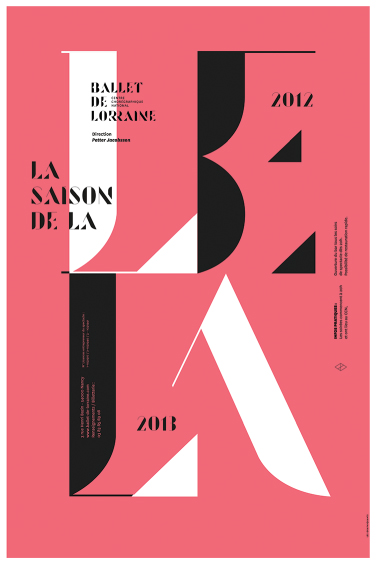
Ballets de Lorraine Poster
Designer: Romain Rachlin
Art Directors: Romain Rachlin and Maxime Tétard
2013
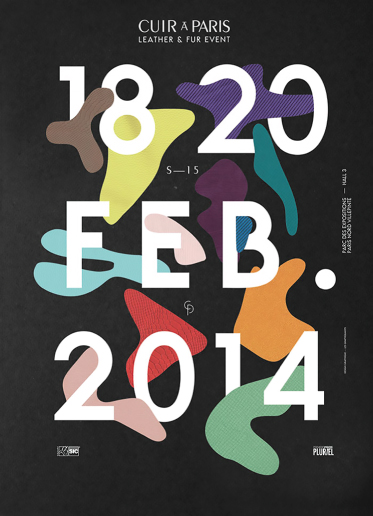
Paris Leather and Fur Trade Show Poster
Designer: Romain Rachlin
Art Directors: Romain Rachlin and Maxime Tétard
2014
You are designing, publishing, and selling examples of your personal work. Does this artistic production help establish and maintain the “creative” reputation of your design studio?
There is no commercial strategy behind our personal work!!!! It is the expression of an ongoing dialog between Maxime and myself. We make sure that we speak the same language. The fact that we have had various opportunities to show our “authorial” production in galleries is almost a fluke. But, ultimately, maintaining our positioning as a “creative team” depends on the kind of answers we propose to our clients.
Alexander Isley
Staying Independent
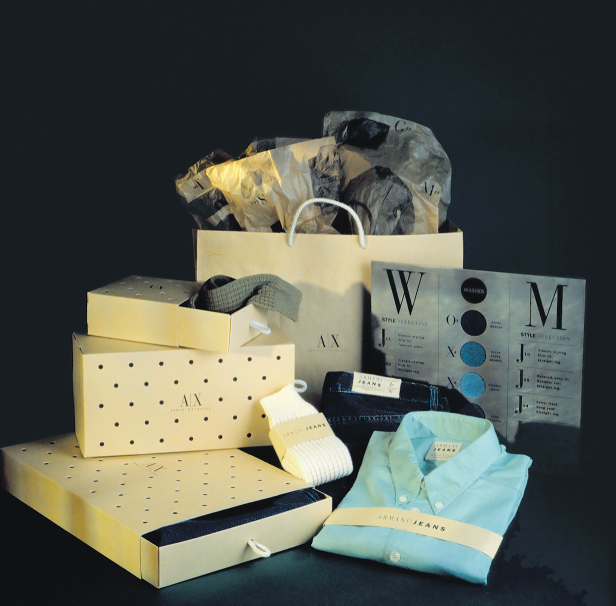
A/X: Armani Exchange Packaging
Client: Giorgio Armani
Advertising Agency: Weiss, Whitten, Carroll, Stagliano
Design Firm: Alexander Isley Inc.
Art Director: Alexander Isley
Designers: Tim Convery, Alexander Knowlton
1992
You were art director at Spy magazine. Why did you decide to open your own studio?
My first real design job was at M&Co., but I've wanted to run my own studio ever since I was young, and I started saving money to start my company back when I was in school. I like the idea of being responsible for and in charge of my own destiny, and running a studio makes this easier. This is not to say that running a studio is easy at all. My father headed up his own architectural firm, so the idea of having a design company seemed natural to me and was not an intimidating proposition. I saw firsthand that it required a vision, ambition, and above all else the willingness to work very hard.
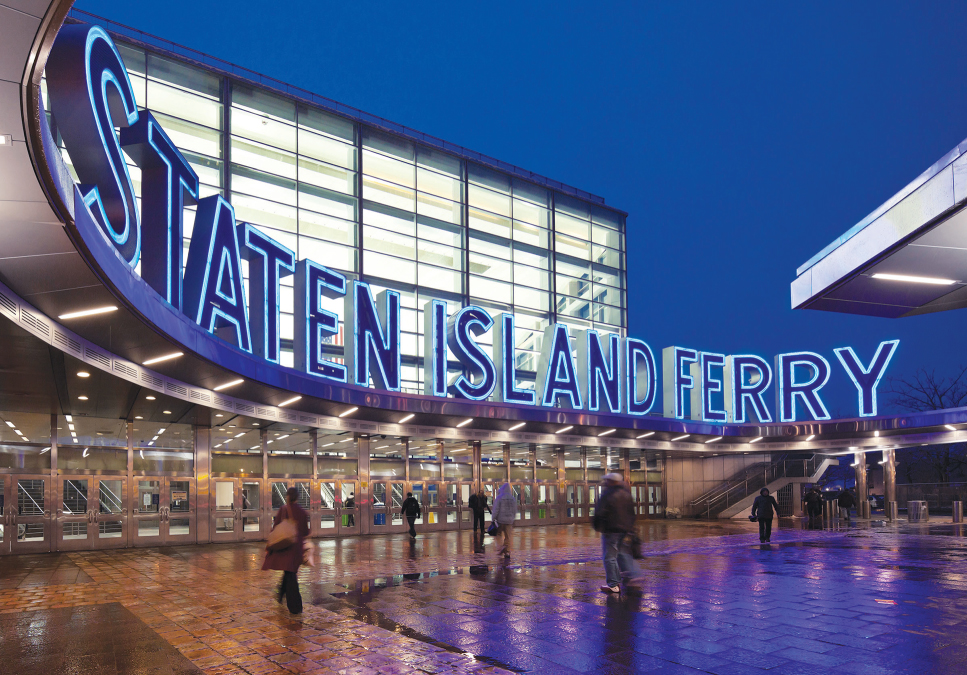
Staten Island Ferry Terminal Signage
Client: City of New York
Architects: Schwartz Architects
Frederic Schwartz, Douglas Romines
Design Firm: Alexander Isley Inc.
Creative Director: Alexander Isley
Designer: Liesl Kaplan
1999
Why didn't you start right after completing your studies?
I first wanted to work in a “real” studio to get an idea of what that was about. Fortunately, for my first job out of Cooper Union, I was hired by Tibor Kalman at M&Co., where I worked as a designer for 2½ years. I learned a lot from Tibor, particularly how to present my ideas to clients and to encourage them to try unexpected things. I learned how to earn people's trust, which is the most important factor if you want your work to be embraced and implemented. It was a wonderful job, but I knew I had to move on. So I took a job at Spy, a humor magazine that was just starting up and needed an art director. They had a prototype in place, designed by Stephen Doyle. I'd never before designed a publication, so that was a challenge, but I believe if you are thoughtful and consider your audience, the content, and what you're trying to convey, you can design pretty much anything. Fortunately (that word again), the editors took a risk with me, and I designed Spy for 18 months or so. I loved it.
But you got the urge to be independent?
I was 26, single, with no big financial obligations, some savings, and good health. I figured I could make it for six months without crawling back to a real job with my tail between my legs—although, to be honest, I couldn't think of another place where I really wanted to work. I tried making a list of potential employers (I still have it), but after having Tibor Kalman, Kurt Andersen, and Graydon Carter as my first three bosses, I didn't think I'd be able to do any better. (It was so fun being young, nervy, and dumb.)
What has been and now is your goal for your studio?
My goals when starting out were: Be my own boss (meaning be in charge of my own destiny); design as wide a variety of things as possible; do work I was proud ofand be able to pay my bills.
These goals have not changed at all, but where in the beginning I juggled a lot of small projects for numerous different clients, I've gone on to make a real effort to focus on doing more comprehensive programs for fewer clients. A big part of this requires having the capability to provide up-front planning and strategic guidance: Brand positioning, establishing communication plans, and naming. So that's the biggest expansion of services that I've implemented over time.
So much of your work involves wit and humor. How does humor inform your output?
Humor is not something I try to wedge into an idea—it just has to happen—but I do think it helps engage people. I think that if you as a person have a sense of humor about yourself, it demonstrates self-confidence. I believe the same goes for companies and organizations, and I try to make our work underscore this.
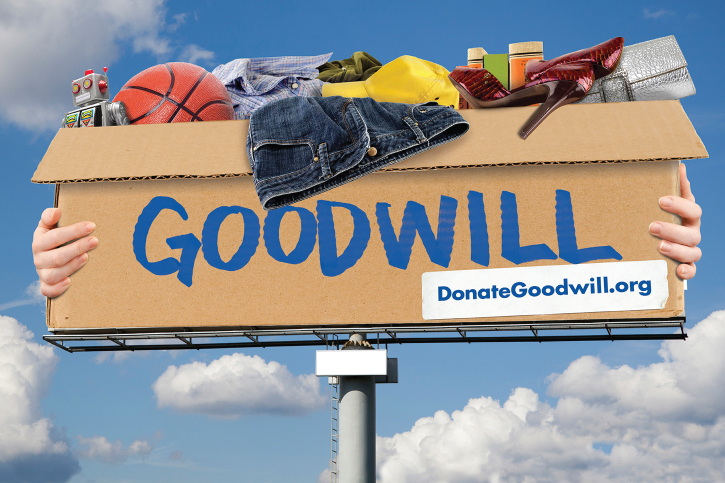
Goodwill Billboard
Client: Goodwill of Western and Northern CT
Advertising Agency: The Dave and Eddy Show
Design Firm: Alexander Isley Inc.
Art Director: Alexander Isley
Designer: Angela Chen
Writer: Dave Goldenberg
2012
Are there jobs you will not take because you cannot inject wit into them?
The potential for creating humorous or witty work has never been a prerequisite for my taking on a client. I actually prefer the kinds of assignments that start out on the straighter side. I've always been a bit wary of doing work that is supposed to be humorous. Those can be tough to do: I don't want our work to be the guy in a clown suit saying, “OK, this is really funny,” because what he says is never as funny as you hope. So I usually steer clear of the “funny” projects.
Typography is also a keystone for your work. Do you have a typographic “philosophy”?
A lot of our work is typographically based because I like to read, and words and letterforms interest me. Additionally, we do a lot of work for cause-related organizations that don't have the budgets for photography or illustration, so we often turn to type to help tell the story. I think it's an interesting challenge to make words serve as illustrations, and I enjoy making text expressive. This approach requires close collaboration between writers and designers. I write the text for many of our projects, and that makes it easier for us to get the content and visuals to work together.
How do you work? Do you still design or manage?
I wear a lot of hats. In addition to overseeing the business, I lead our positioning exercises and serve as the creative director. My name's on the door, and I enjoy (and feel a responsibility for) being involved in everything we create. I started out wanting to be a designer, not a suit, so I am very much immersed in the creation of all that we do. But by no means should that suggest it's all me: I have surrounded myself with trusted and talented collaborators, and I depend on them. I serve as more of a creative director/editor; when we start off each assignment, I develop the brief and indicate a few directions I'd like us to explore, but I ask that the project designers come up with a series of additional ideas as well. We then typically narrow down these approaches to a select few to refine and present to the client. Nothing makes me happier than when we are able to sell a client on an idea that didn't originate with me.
When you hire designers, what do you look for in their portfolios?
I don't just look at the work in the portfolio. I can often tell by the way a resume is written and laid out if someone is a good designer or not: Is it logical, succinct, and typographically well considered? Past that, I look for designers who are organized and thoughtful. When explaining their work, do they discuss why they chose to do something? Do I get the sense they'll play well with others? Can I put them in front of a client? Some young designers four months out of school have more poise than do veterans. I want to enjoy being around someone and for them to be dependable. You can teach design, but you can't teach organization.
After all these years, are you happy with the size and breadth of your studio, or do you foresee expansion or reduction?
We stay lean and mean. What this means is that I have to work my butt off. Fortunately, I love what I do and look forward to coming in to work every day, but I'd always kind of hoped that by the time I reached 50 this would all get a little easier, but that has not happened yet. Who am I kidding?
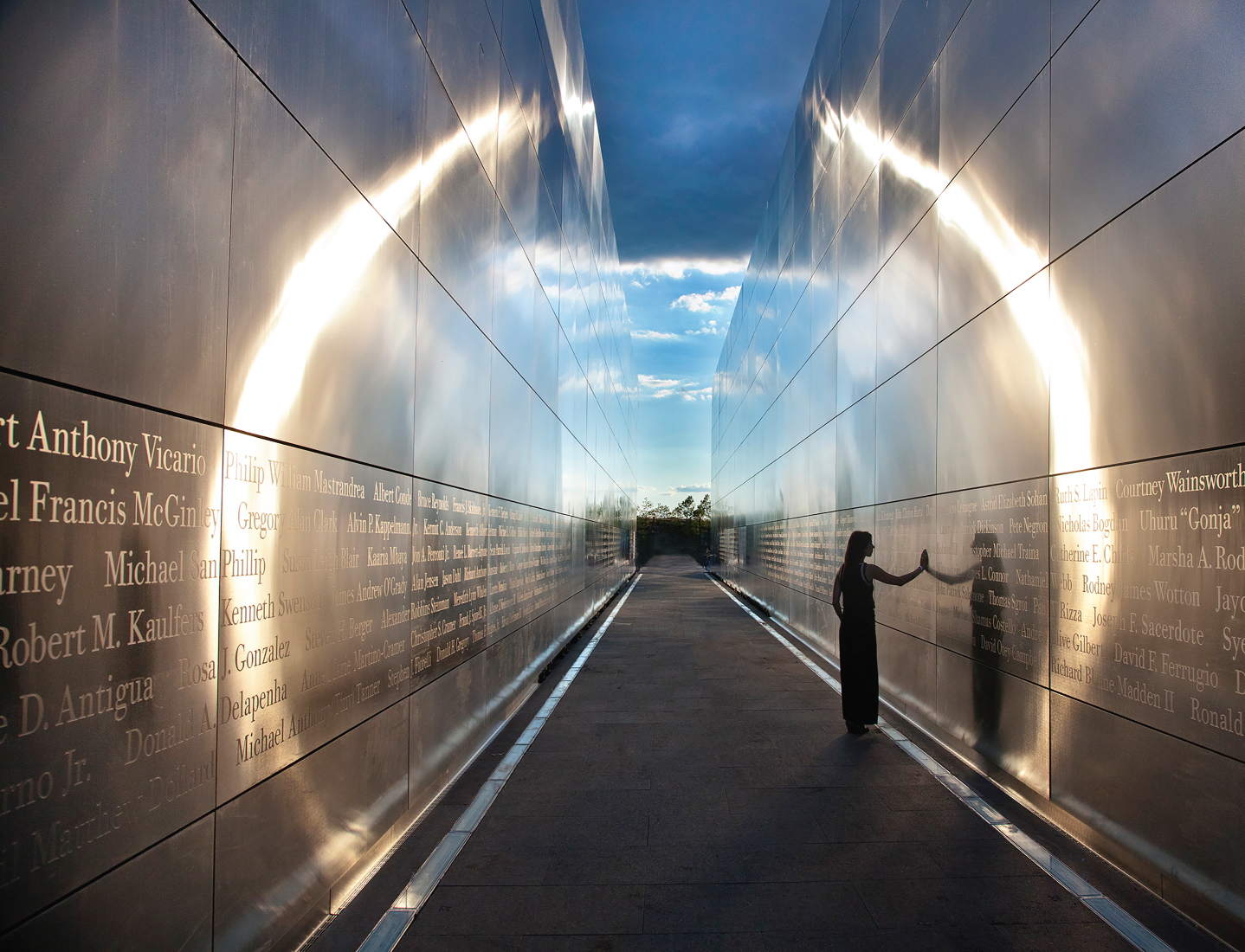
“Empty Sky” New Jersey 9/11 Memorial
Inscription Program
Client: The State of New Jersey
Architects: Schwartz Architects
Frederic Schwartz, Jessica Jamroz
Design Firm: Alexander Isley Inc.
Creative Director: Alexander Isley
Designer: Hayley Capodilupo
2011
Agnieszka Gasparska
Small Is Sensible
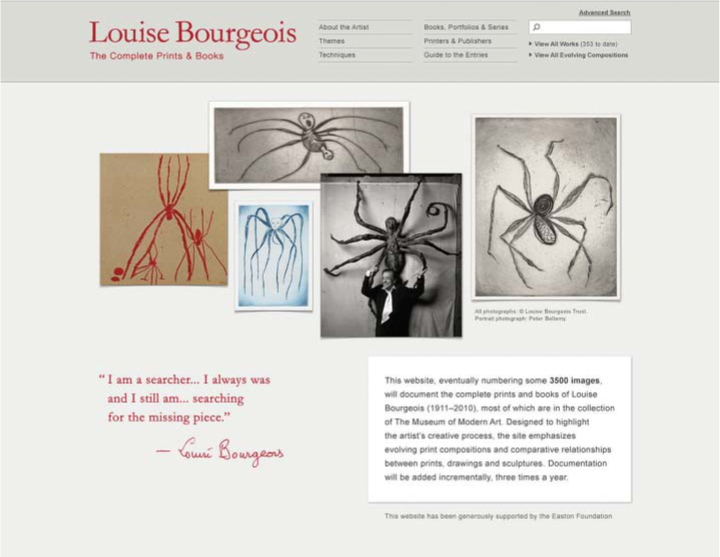
Louise Bourgeois— The Complete Prints & Books
Client: Museum of Modern Art
Art Director/Designer: Agnieszka Gasparska, Kiss Me I'm Polish LLC
Information Architect: Irwin Chen, Redub LLC
2012
Many people who run studios do not do the design themselves. How do you work?
I definitely still spend time designing. Thankfully. It probably leads to much longer workdays than I would like but it's very important to me. I didn't start my own firm so I could spend all of my time managing only the business side of things so other people could do the fun stuff. Yes, there are certainly projects I don't get to design as much of as I would like, but there are only so many hours in the day, so there's that, too. I do my best and try and stay as involved as I can in the creative process—be it by actually getting my own hands dirty or by collaborating with my team—which is still design to me. I try and focus my time on those things that I'm best at and those that only I can do.
How many designers do you work with?
Kiss Me I'm Polish has three full-time people (including myself), two freelance designers, and one studio mate, in addition to an extended circle of other freelancers (i.e., illustrators, web developers, animators, sound designers) that come on board for specific projects as needed.
You do both print and digital work. What do you prefer?
I prefer both. Not only does it keep things more interesting to think across media boundaries, but, more and more of our projects include both print and digital solutions in one comprehensive outcome. There is genuine overlap between print and digital experiences, and the design process follows suit. We may work on a concept that will ultimately live both on paper and onscreen, so the formats are just part of the parameters. The approach and the story come first. How it's implemented will be dictated later, by a given point in time or a given application. As a multidisciplinary design studio, this is one of the things I love most about our work.
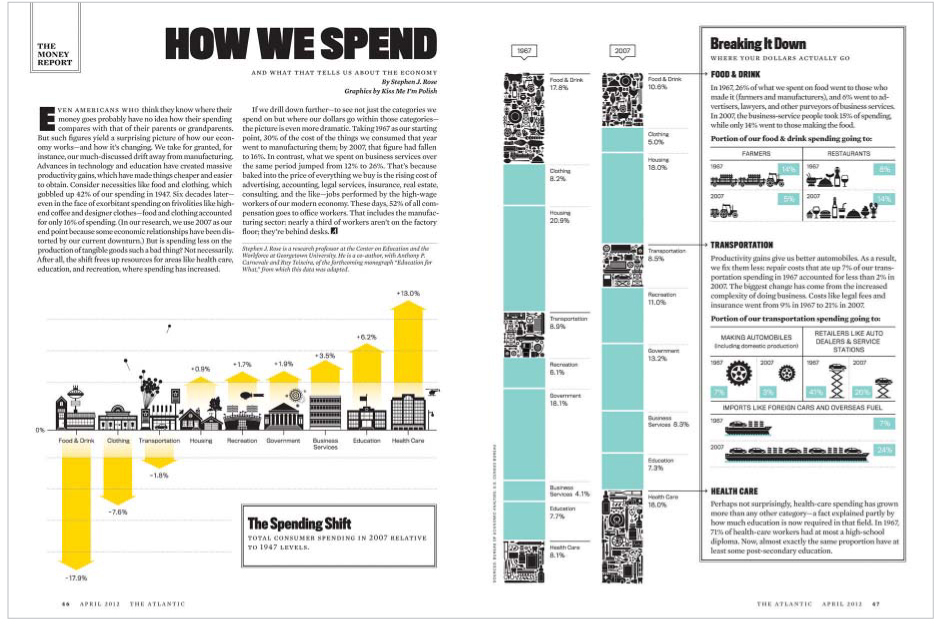
How We Spend
Client: The Atlantic Monthly Magazine
Art Director/Designer: Agnieszka Gasparska, Kiss Me I'm Polish LLC
Designer: Mattias Mackler, Kiss Me I'm Polish LLC
2012
What do your clients want most?
Everything! It's funny, so many clients have no idea what they want. Or they do, but it winds up being that, while they thought they wanted A, all along, if you truly listen to what they are trying to do, they really want B.
Some of your work is information design. How did you become an information designer?
This isn't something I sat down one day and decided I would become. There was a point a few years ago when information graphics became a much bigger part of our visual culture and we naturally started seeing more and more of them come into play in our projects—whether as the focus of an assignment or simply as part of a larger suite of visual materials. Interestingly enough though, some of our most meaningful information graphic projects ultimately led to us doing much larger projects with those clients once the initial assignment was complete.
What do you look for in a designer?
Being such a tight-knit team, the designers we work with really need to have it all. A tall order, I know. But as a small studio, each of us really needs to be able to jump from discipline to discipline and from project to project pretty gracefully. On any given day, we each need to be ready to tackle a vast range of assignments from different angles and expertly navigate anything from a website design to an animation storyboard to a complex information graphic to a written article or pitch proposal. Verbal and written communication skills are a must. The ability to draw comes in really handy. As far as attention to detail goes, going back to fix something silly like a misspelled word or a mismatched color that should have been caught the first time around can really waste a lot of time. Our clients have come to rely on our incredibly keen eye, so I try and make sure we all have a strong gene in that department.
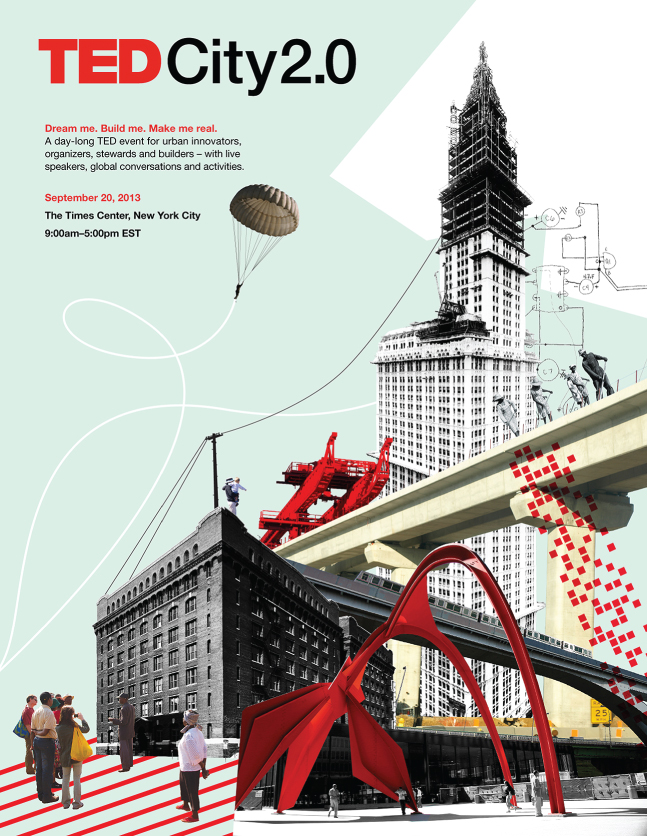
TedCity2.0
Client: TED
Art Director: Agnieszka Gasparska, Kiss Me I'm Polish LLC
Designers: Rachel Matts, Min Jin Shin
2013
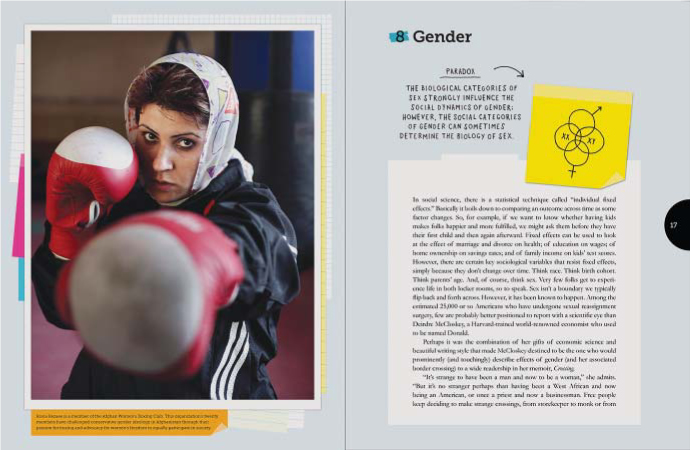
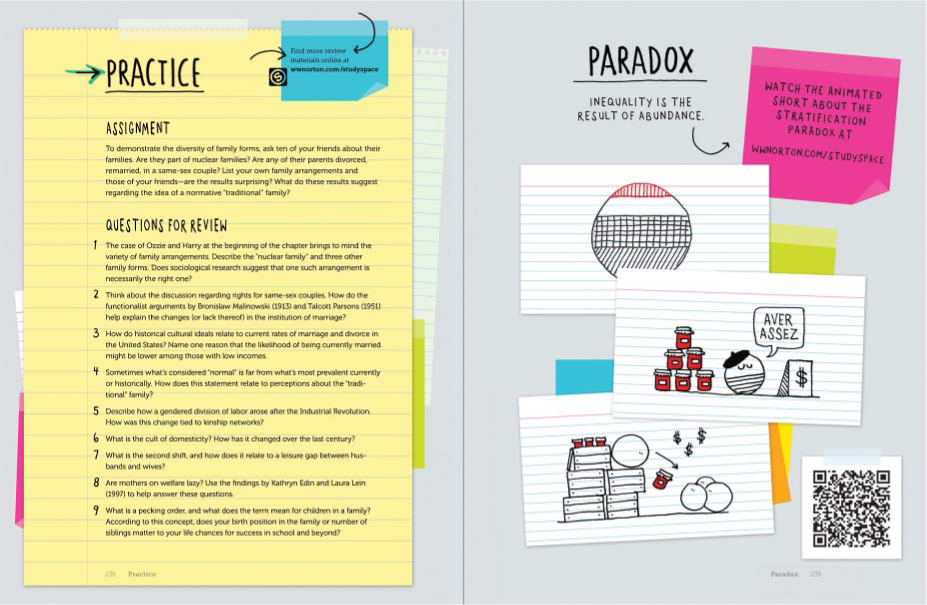
You May Ask Yourself: An Introduction to Thinking Like a Sociologist
Client: WW Norton
Art Director/Designer: Agnieszka Gasparska, Kiss Me I'm Polish LLC
Designer: Mattias Mackler, Kiss Me I'm Polish LLC
Animator: Aaron Hughes
Sound Designer: Kevin Scott
2013
Bobby Martin and Jennifer Kinon
Championing Design
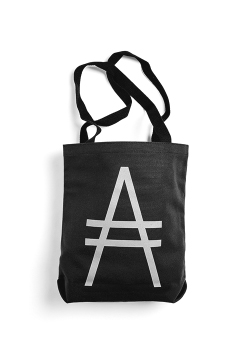
High Line Art
Agency: OCD | The Original Champions of Design
Design: Jennifer Kinon, Bobby C. Martin Jr., Michele Byrne, Minjung Suh, Alex Boland
How did you two meet?
We've been working together forever. We were seated next to each other on the first day of grad school at SVA MFA Design/Designer as Author + Entrepreneur. We are extremely competitive. We pushed each other to work harder and longer and over time gained each other's trust through honest feedback.
What is the reason for the quirky name?
It's a little over the top, and we're a little over the top. We push our team, our students, and our clients to make bold and memorable design decisions. But really—to our core—we take championing design very seriously. Our name reflects who we are, what we do, and how we work: methodical, meticulous, relentless.
What areas are you complementary and others where you overlap in terms of your skills and aesthetics?
We're both designers, so it's all overlap. And we're both driven by our gut, so whoever shows up feeling most brave and ballsy really drives the work that day.
How do you break down the workload?
We still handle projects the same way we did in grad school. One person leads the charge, and the other offers honest feedback. We've found that even a brainstorm needs a single captain keeping the ship right. Ultimately, nothing goes out the door without both of us blessing it.
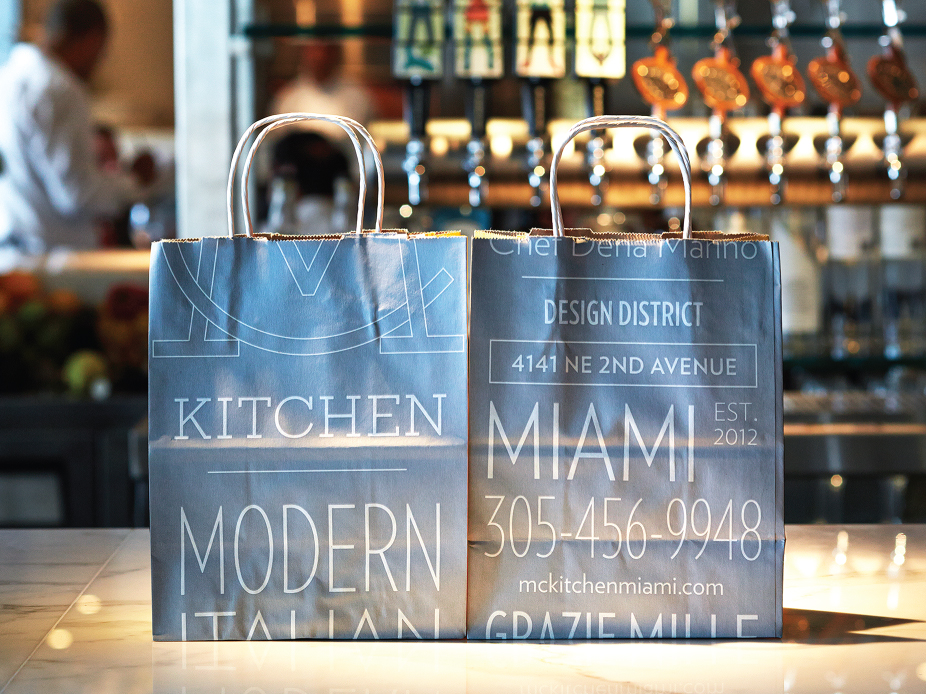
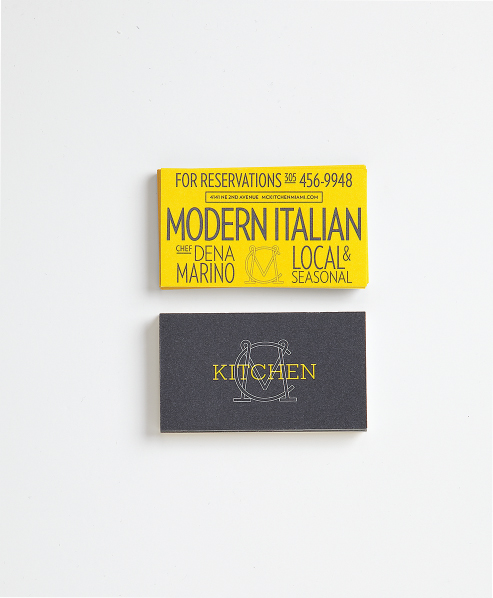
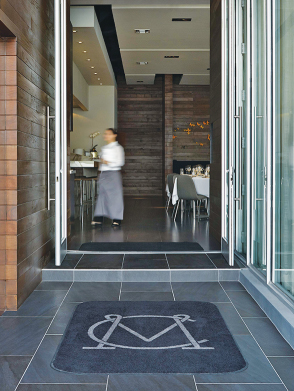
MC Kitchen
Agency: OCD | The Original Champions of Design
Design: Jennifer Kinon, Bobby C. Martin Jr., Jeff Close
Do you both sell? Do you both design? Do you both manage?
We both do it all. Happily, we share the design responsibilities with a great team. The work comes first; second is the other stuff.
What has been the most difficult and/or exciting challenge of your partnership?
Working together. It's tough to keep pushing, pushing, pushing, but it's also the best part of the job.
What has been the most exciting work you've done together?
Building the business. We've toned it down a bit, but during the first year of OCD, our mantra was “say no to nothing.” We have no idea what we're doing, but—so far—we've been able to figure it out bit by bit.
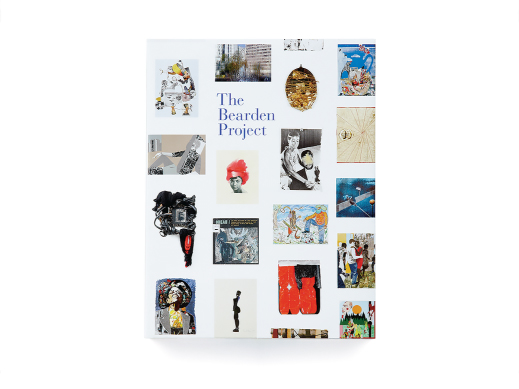
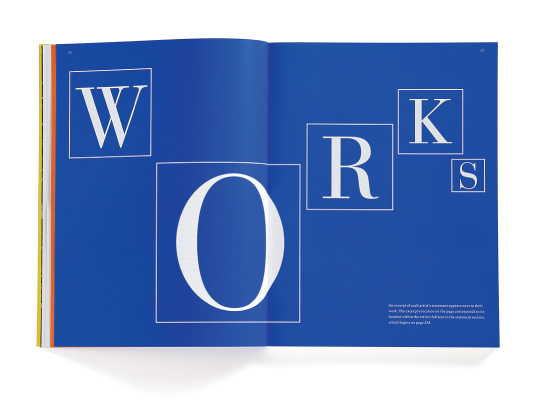
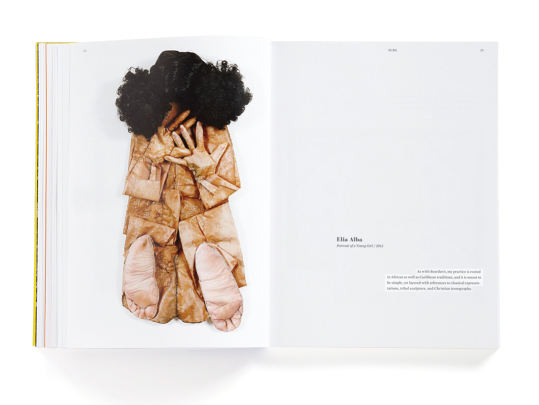
Studio Museum in Harlem
Agency: OCD | The Original Champions of Design
Design: Jennifer Kinon, Bobby C. Martin Jr., Justin Chen

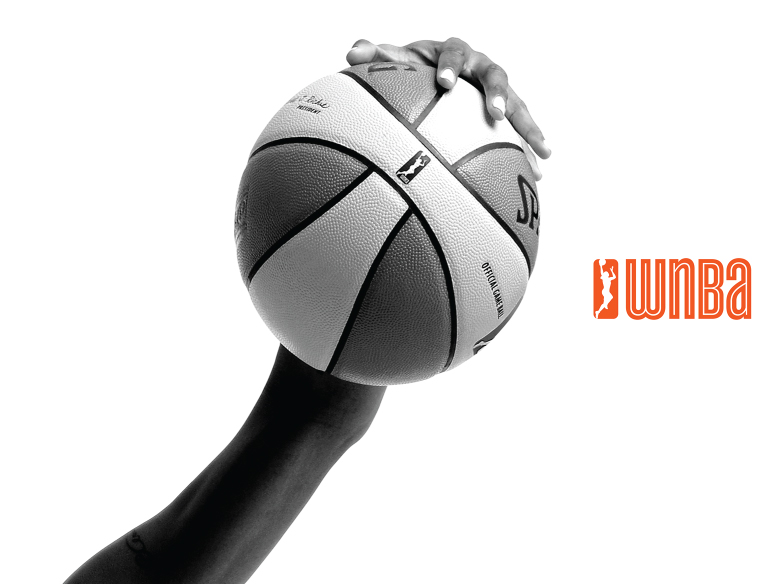
WNBA
Agency: OCD | The Original Champions of Design
Design: Jennifer Kinon, Bobby C. Martin Jr., Thomas Porostocky, Alex Boland and Joe Finocchiaro
Photography: Jennifer Pottheiser
What is the ratio of print to online or screen-based design?
Branding is media agnostic. It needs to work everywhere on everything, so we do it all without much thought to the silos. The big change is that a few years ago we were delivering brand guidelines. Now we are not just guidelining the work, but implementing it as well. That extra step allows us to fully flesh out every element of the visual language and drive the strategy home.
What do you look for when you hire designers?
- 10. Know why you want to work with us
- 9. Know design history
- 8. Ask (good) questions
- 7. Have a vision for your future
- 6. Present your work well
- 5. Show us a passion project
- 4. Be on time
- 3. Over deliver
- 2. Be nice
- 1. Send a thank-you note
Antonio Alcalá
What a Dream Client Looks Like
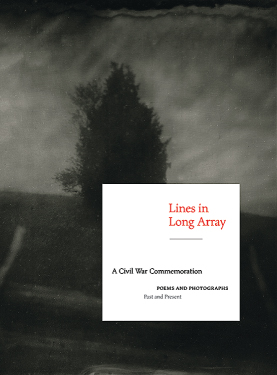
Lines in Long Array
Client: Smithsonian, National Portrait Gallery
Designer: Antonio Alcalá
2013
When and why did you found Studio A?
Studio A opened officially in 1988. My graduate school department chair always recommended students go into business for themselves. So I did. Opening my own shop allowed me to work on a greater variety of projects and devote extra attention to work that interested me.
How large is your studio and how big do you want it to be?
Currently, we are five designers. Running a smaller studio allows me to spend more time designing and less time in meetings and management. I'm interested in growing a bit larger as long as the quality of the work can remain high and I'm still actively engaged in the design work.
What or which of your clients do you enjoy the most from a creative standpoint?
My favorite clients are those who trust me and respect the design process. They're the ones who are confident I'll do research and provide solutions appropriate to their content. Also, when the proposed solutions are not typical, they still give their full support.
How much of the creative decisions and “making” are yours?
Most of the final creative decisions are mine. But the studio operates in a very collaborative manner. We're constantly asking for each other's opinion on projects as they are in process. I strongly believe the end results are almost always a result of everyone's input. That's why almost all our work is credited to Studio A and not specifically to me.
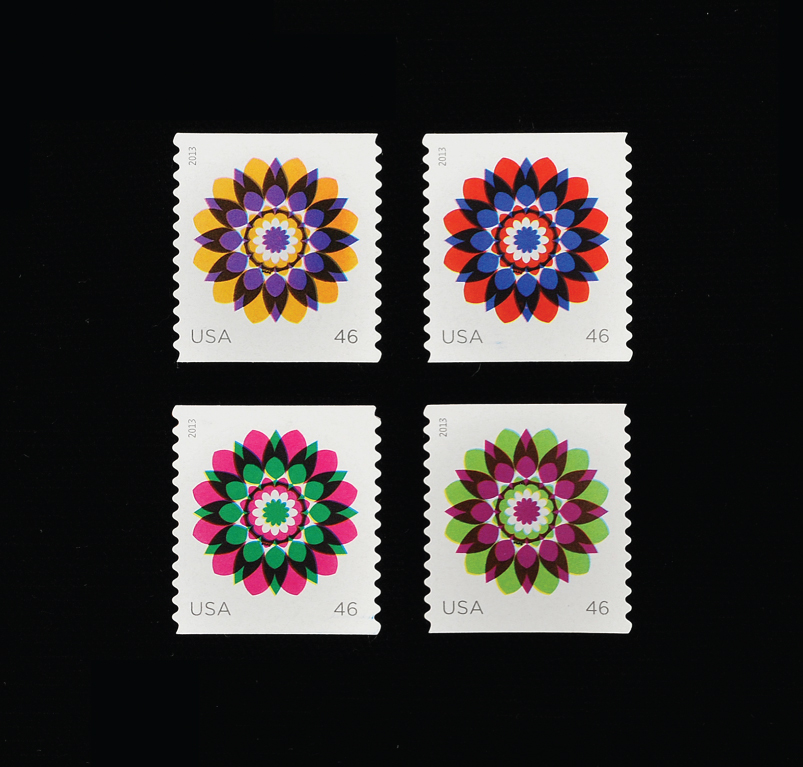
Kaleidoscope Flowers stamps
Client: United States Postal Service
Art Director: Antonio Alcalá
Designer: Nicole and Petra Kapitza
2013
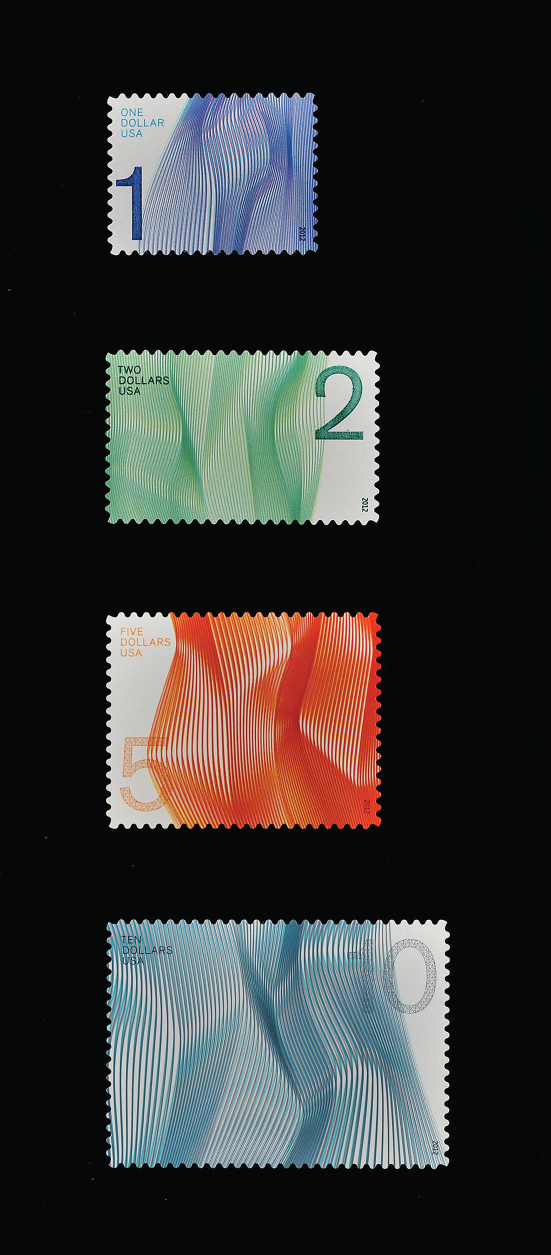
Waves of Color stamps
Client: United States Postal Service
Art Director: Antonio Alcalá
Designer: Michael Dyer
2012
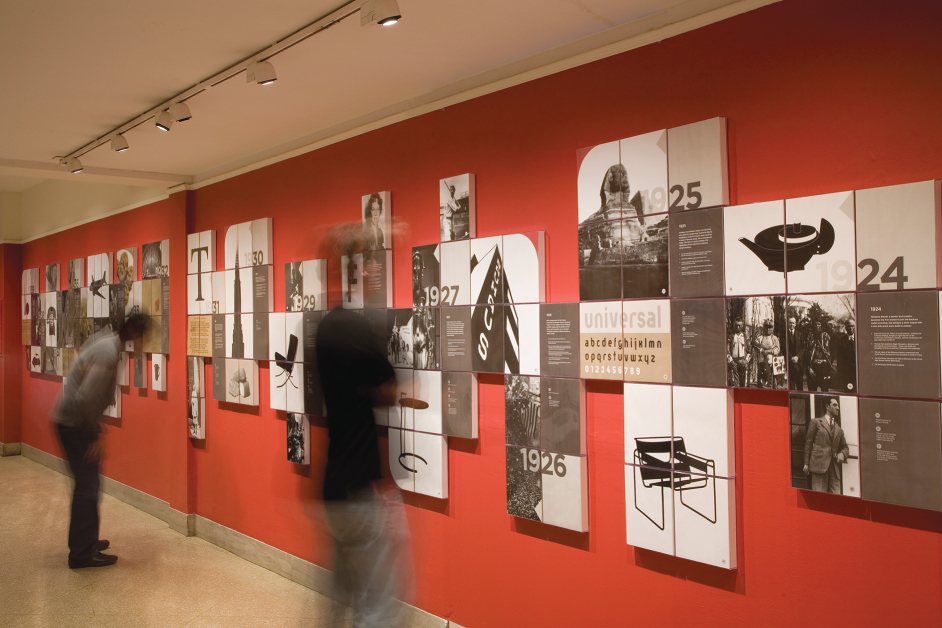
Modernism: A Chronology 1914–1939
Client: Corcoran Gallery of Art
Art Director: Antonio Alcalá
Designer: Corcoran College of Art + Design Students, Class of 2007
2007
How much do you delegate to your staff?
Delegation depends on schedule and client. We do two magazines I barely see during production, and only when I'm invited. A few clients specifically want me to do the design, and those usually stay with me. Overall, a lot of work gets delegated, but then I review most of it before sending it to the client.
When looking for a designer, what do you want to see?
I'm interested in smart people who can think. Curiosity is good. It's essential that they have an appreciation or understanding of good typography. I'm also interested in people who are interested in the kind of work we do.
You've art directed stamps for the U.S. Postal Service. How did that come about, and how does it function?
To be honest, I'm not exactly sure why I was tapped for the USPS work. But here's my best guess: Studio A does a lot of work with museums. One of our longtime clients is the Smithsonian's National Postal Museum. Word travels fast in Washington. On the strength of my work for the NPM and other clients in town, and a known interest in stamps, I was invited to join the Citizen's Stamp Advisory Committee. They're a group of people who meet quarterly to advise the postmaster general on what stamps the U.S. should issue and to review designs. After a year, I was offered a position as an art director for the stamp program. Now, along with three other art directors, I oversee the creation of the stamp designs for the USPS. The USPS gives me assignments (stamp subject) and production schedules. Sometimes I get to design the stamps myself. More often, I work with illustrators, photographers, or designers to help create the stamp.
Mark Pernice
From Band Member to Design Leader
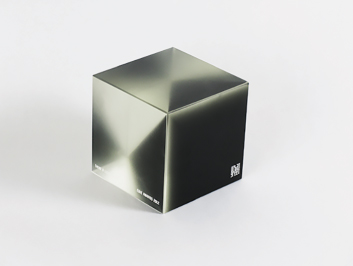
EBIE Awards
Client: Urban Green Council
Creative Direction: Mark Pernice
Art Direction: Zhang Qingyun
Design: Mark Pernice, Zhang Qingyun, Wing Chui, Stephanie Miller
Animation: Stephanie Miller
Award Production Direction: Vim & Vigor Inc.
Award Fabrication: Dave Marin
2012
What prompted you to start your own studio and to join forces with your studio partner?
I went to art school but for a different major entirely. SVA had a program called Computer Art. Even then it was a little nebulous, and I just floated around knowing I didn't really want to be a 3-D animator, which was then the unspoken focus of the program. During those years and soon after graduation, I was playing music and looked to that as a professional trajectory. I started designing things for our band and friends' bands and thought I could hack it as a graphic designer. I landed a job designing movie posters for mostly indie films to pay the rent while waiting for the big rock star break. Like most young volatile bands, we didn't last long enough to see that happen, and the music industry went into a spiral, so I decided I'd stick with design (and later illustration).
Was it an easy transition?
As much as my first design job was a stepping stone, it was also death trap: bad ethics, bad bosses, bad design, bad vibes, bad everything. I guess it had me believing every job was going to be like that. I now know I was wrong from the very short time spent with Sagmeister and at Pentagram, but it pushed me to build something myself. I've been freelancing for a long time, one man working in his symbolic underwear and slippers and for illustration that's endeared, but I realized that in design, companies want to work with companies. I was losing bigger projects because of this, even with scalable resources. At the same time, I was getting a little strung out and lonely trying to drive the ship myself. Partnering and starting a legitimate studio was the next natural step.
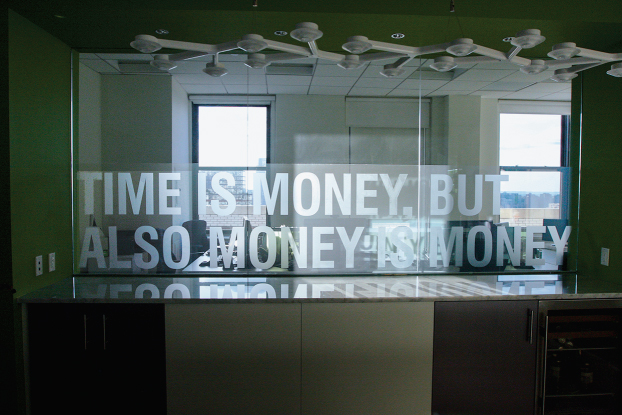
29 Broadway Installation
Client: Zachary Smith
Art Direction: Mark Pernice/Zhang Qingyun
Design: Mark Pernice, Zhang Qingyun, Kathleen Fitzgerald
2013
How did you find your partner?
Zhang had interned for me, and we just worked really well together. I would occasionally talk to a few designer friends about joining forces, but it always seemed like I was trying to convince them of something they didn't really want to do. I was a bit hesitant to approach Zhang at first because he was still pretty green in the professional world, so we kept in touch while he went out and cut his teeth at other firms while we came up with a plan. Now here we are.
Do you approach your Web work differently than your print?
We try to have the same mind set creatively. If you would be proud enough of the site to put it on the coffee table as you would a book, that's the approach we like. However, there are different things to keep in mind when dealing with the differences of digital user experiences and tangible user experiences. Just a few years ago, there were many more limitations todesigning for the Web. The Internet wasn't originally designed to be designed. It never really came out of beta until recently. It's a way more freeing medium now to work in.
Which medium or platform do you prefer?
These days you need to be a studio capable of combining different mediums and platforms. If I did five corporate identities consecutively, I'd prefer to do a poster for a museum or a book, or a music video, or some weird advertising next. Luckily, we always have different things going on as well as personal projects, so it's a non-issue. Nobody says they want to do one thing over and over forever—not even the things they like—and today anything that's a form of design or visual communication is fair game.
When you hire assistants or engage an intern, what do you look for?
Sometimes it's their work and ideas I'm drawn to. I can't say good work because it might be great, just not a good fit for our studio. Sometimes it's a mix of personality, ambition, professionalism, and skill in areas we're not skilled in. Sometimes it's just a feeling. One thing to note, I'm not a neat freak, but I like to keep the place as tidy as I can. If you're a mess, it's not going to work out.
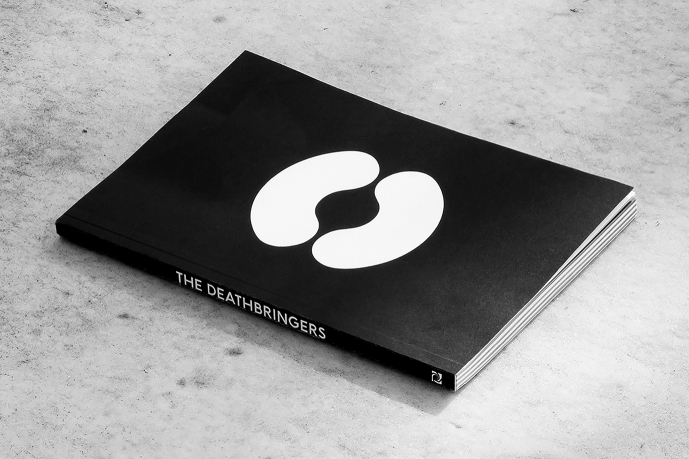
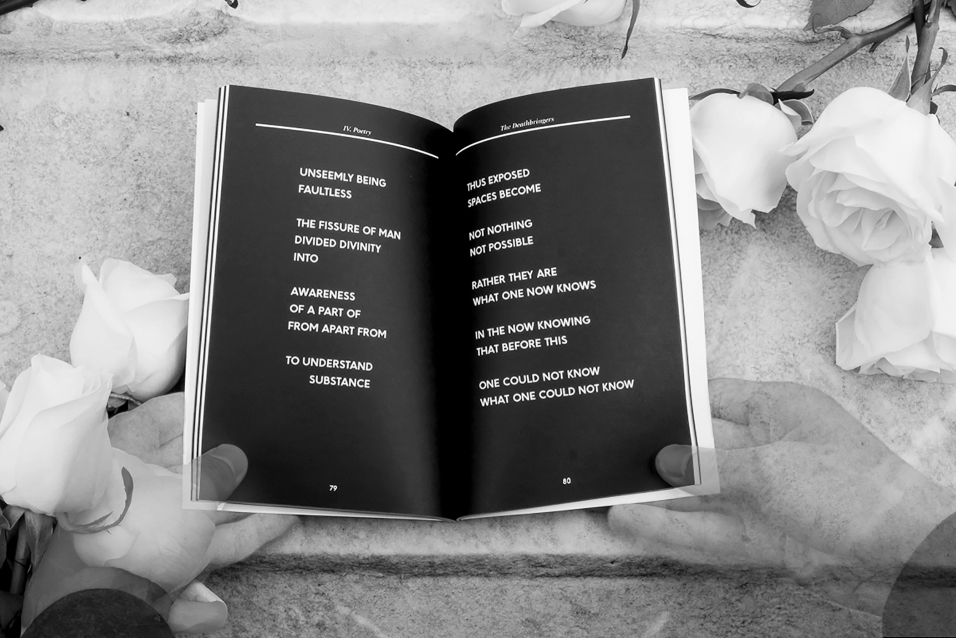
The Deathbringers
Author/Artist: Jason Blasso
Art Direction: Mark Pernice
Design: Mark Pernice
Animation: Stephanie Miller
2013
Tamara Gildengers Connolly
Balancing Studio and Home

KLI Holiday Cards
Design: We Are How
What prompted you to start your studio on such a small scale?
I knew I would gain valuable perspective from shifting between the various roles needed to make a business work, rather than focusing on one specific role within a larger organization. There also was, and continues to be, great pride in knowing that this is “the house that I built.”
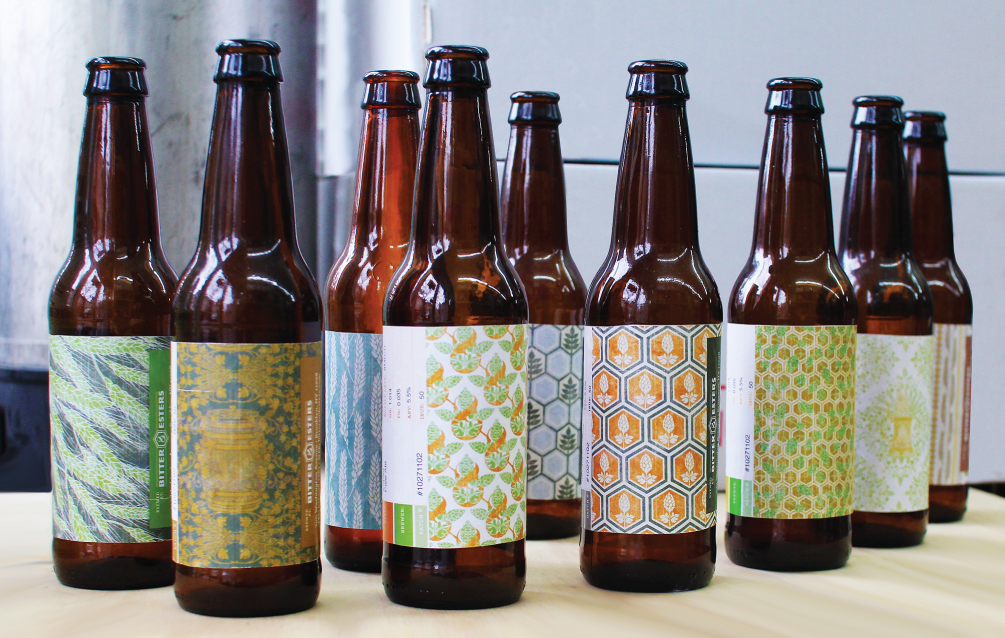
Bitter and Esters Bottles
Design: We Are How
You do almost everything on your own, with one assistant. How difficult is it to find clients when you are so involved?
In our case, getting clients has almost always been through referrals. We concentrate on doing good work and being great to work with. We have steady clients whom we currently work with, some of whom I initially started working with years ago as a freelancer. When people from these organizations moved into new positions at other organizations, they continued to recommend us. Additionally, clients showcasing the projects and goals we helped them complete to others in their fields or professional networks have also brought us new clients and types of work; it's been a slow, steady process of organic growth.
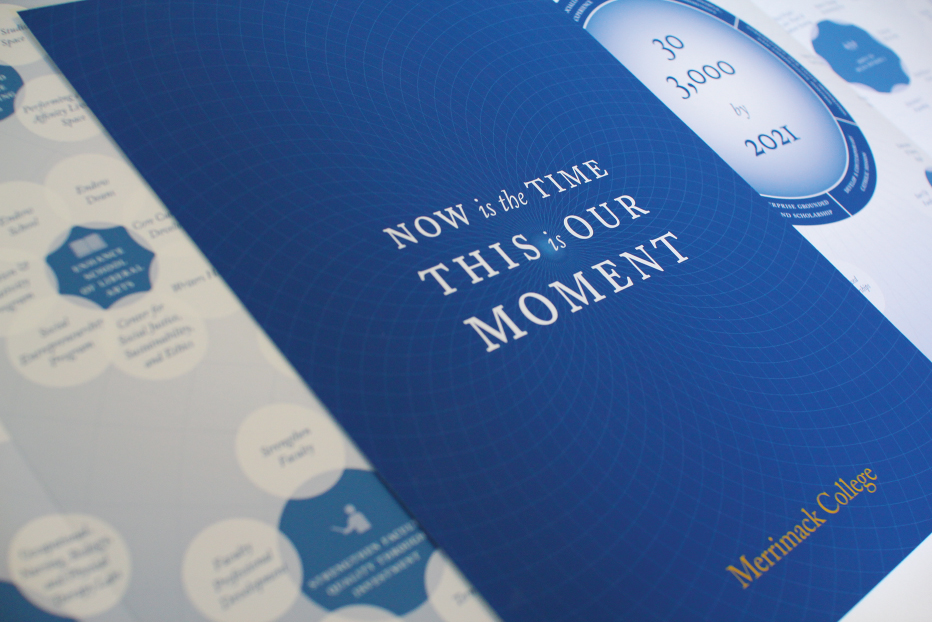
Merrimack College Collateral
Design: We Are How
Do you fear getting big enough where you yourself do not design?
Yes, and I'm quite wary of that possibility becoming a reality. The way the business has been growing, if we don't get bigger, then this becomes more of a possibility to some extent.
You have your studio in your home. What are the pros and cons of that?
The pros and cons have shifted over time, as the particulars of my professional and personal lives have changed. Years ago, when I was first starting out as a freelancer, the challenges were around keeping a regular schedule and not getting sucked into work 24/7— my personality is more inclined to get absorbed by work then distracted by personal space. I've since learned to manage these expectations and my time much more effectively; these days it's an asset that work is easily accessible to me and that it doesn't run my life.
What type of clients and jobs do you want to take on?
I love being a multidisciplinary studio with an extremely varied range of clients (size, industry, design needs, etc.)–this is certainly something I want to preserve as we grow. I care more about being able to foster good relationships with our clients than with what sector they are in.
Is what you are doing, so far, a successful business model?
I believe so, because thus far we're on the positive trajectory of growth we'd hoped for. Although I'd been freelancing for years, the business as it is now is still in its nascency. You often hear about the first four to five years of a business being the “survival years,” and to date, we are on the right track.
What do you look for or what do you want in someone you hire?
They need to honor thoughtful design and have an understanding of cultural relevance. In addition to that, they should also honor that life is about more than just producing, and work is much more effective and enjoyable when we are pleasurable to collaborate with, well organized, and clear in our goals, attentive to details, and mindful in our follow-through. We look for effective and empathetic communicators who can gauge how to involve team members such that everyone's resources are being used in the best way; a talented polymath, passionate about everything they do, who have a robust appetite for learning how to do things they don't know how to at present. It's also crucial that they have a healthy relationship with their own ego and receiving feedback—we are a team after all.
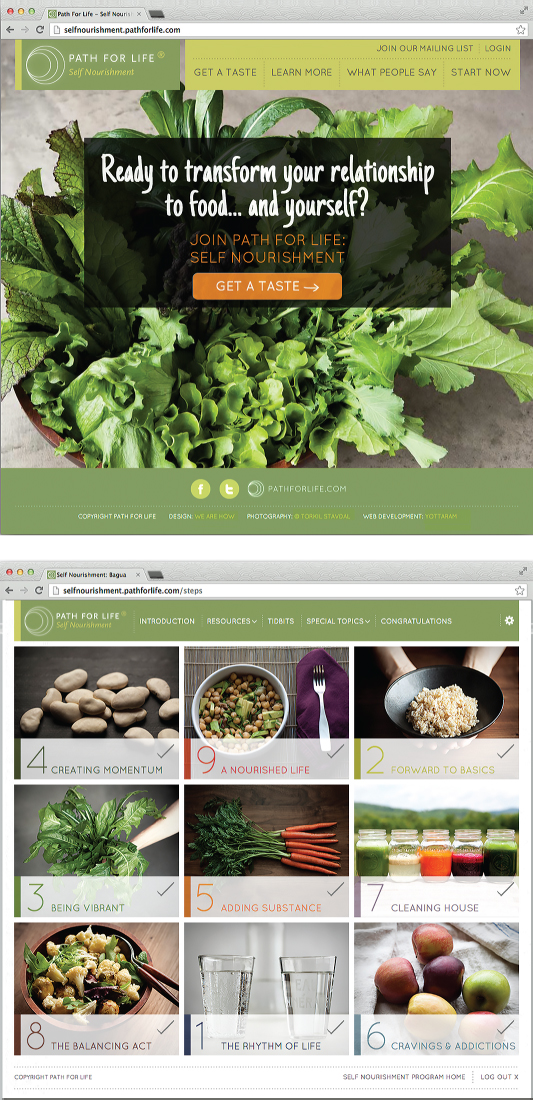
Path for Life Website
Designer: We Are How
Photography: Torkil Stavdal
Web Development: Yottaram
Araba Simpson
One Person, All Alone
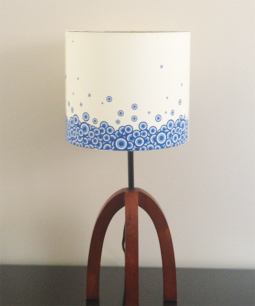
Aesyna Lampshades
Designer and Photographer: Araba Simpson
You are a one-person shop. What does that mean exactly?
I do it all: design, billing, new client development. I don't have a staff, but I do engage freelancers for specific skills I may need for a particular project.
Do you hire yourself out to different design firms, or do you locate clients on your own?
I try to work with my own clients from my home office. However, depending on the client, or the magnitude and duration of the project, I am opening to working for/at different design firms. On-site client projects are a bit tricky because they require a great deal of time management in order to make sure my other clients aren't neglected. Most of my clients come by recommendation, particularly through my good friends at Original Champions of Design and RED, and from former clients.
With only you doing everything, how do you get everything done?
I've been working on my own for a little over three years now, and in that time I have started to figure out systems. For example, I do billing and any sort of business-related tasks on Thursdays, I try not to commit to Monday design deliverables, and I do my very best to stagger projects. Staggering projects hardly ever works because projects tend to come in waves.
What is your biggest strength as a designer?
To be able to truly listen and understand my client's needs when I get into a project—and my ability to develop pretty good relationships with them.
And your weakness?
Sob stories are my weakness, and so many people have emergency design sob stories that generally end with. . . “and we don't have any money. . . .”
How do you balance strength and weakness in your practice?
It's taken me a while, but I've started to learn to sidestep the sob stories by explaining the value of design. If the sob-story project is something that really piques my interest, and if I can afford the time to do it pro bono, I will take it on.
Who are your favorite clients, and why?
The clients who let me have fun and trust my judgment are my favorites. Those clients make my job so much easier—those are the instances when I am working WITH someone rather than for them.
Is there anything about the business of design that you still need to know?
There is so much more I need to know, I am literally learning by doing.
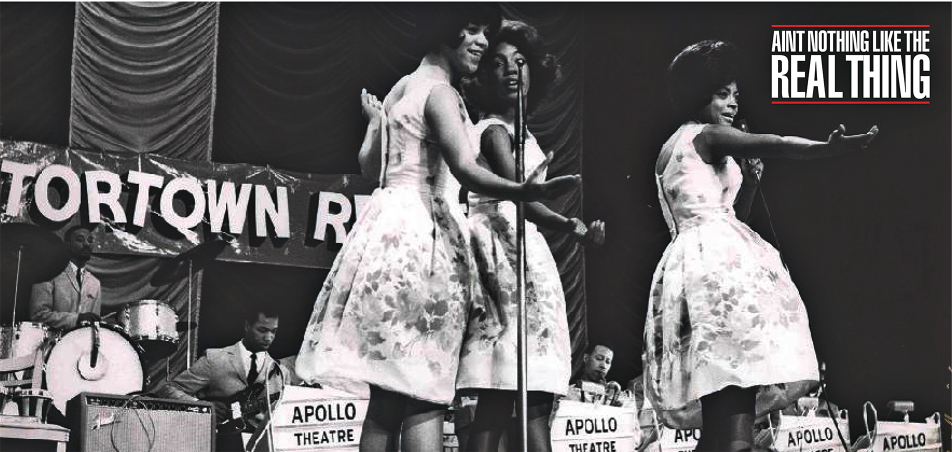
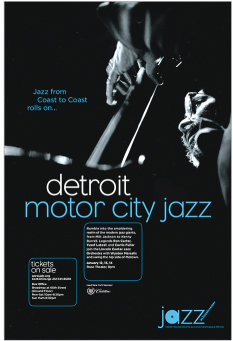
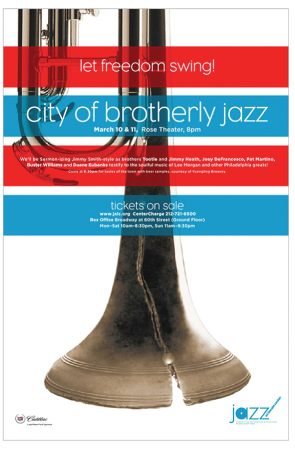
Jazz at Lincoln Center Posters
Designer: Araba Simpson
Matt Luckhurst
Designing for Design Firms
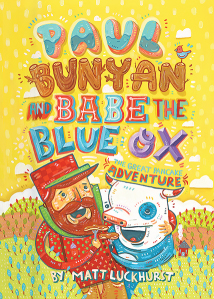
Paul Bunyan and Babe the Blue Ox: The Great Pancake Adventure”
Editor: Howard Reeves
Art Director: Chad Beckerman
Author and Illustrator: Matt Luckhurst
Starting out you were hired at Collins, a design and business strategy firm. What was the adjustment for you? What new did you have to know?
There were a lot of surprises for me when I entered the workforce. One of the biggest was learning to articulate what I did, not just for a creative crowd, but also for those who are unaware or uninterested in the design process. I say quite often to young designers that it is important to have a point of view in your work. I think this helps you move forward in your professional life. If you're lucky, you'll have a great creative director to help guide you and inform your language, but you have to be prepared to fight for your work to progress and stand out. Quite often there are more support staff than “makers” in these firms, and to make things that matter, you'll need to articulate what you're passionate about doing. As my career continues, I have to focus more and more on strategy, particularly if I want to have creative influence.
What do you do now at Airbnb that is different from you last job? How have you evolved?
I never thought I would enter the in-house world of design, but Airbnb seemed like a chance to influence a very unique brand in a big way. I've been lucky to land at a disruptive company that does not lack for creativity and innovation. There is simplicity in working for an ad or design firm. Everyone is united around doing creative work for clients, and the employees speak the same or similar languages. In-house, people are from a multitude of backgrounds, and design is just one function of the company. You're exposed to working with dozens of different teams to find solutions, while also making sure design is helping inform the company's trajectory. I think there are huge benefits to being on both sides of the table, and learning how the entire process works is invaluable.
How do you work with clients? Is this collaboration, or do you hold your work close to the chest?
Lots of collaboration. You have to listen to what people want. Even if you disagree, they are the clients and it's up to you to lead them to an effective solution, not force it on them. I find the easiest way to do this is to keep an open dialogue and collaborate as much as possible. Part of that is defining an effective process early on. Make sure you have clearly outlined dates and expectations before you start working and, when possible, present and get buy-in on a strategy before you begin designing. This gives you and your client language to speak about and critique the work.

Hackathon Poster
Design: Matt Lackhurst
You went to graduate school. Was this necessary to reach your goals?
At the time I debated the value of it. I'd already done two years in commerce, plus four years in undergrad design, and here I was—26 years old. I felt like it was time to get a job. Also, I'm not the kind of person who “misses school”; it's fun, but so is having a job. Anyhow, when I was accepted, I was torn, but I did it and am very grateful for the opportunity. I'm not sure it's for everyone, but it gave me time to fulfill my potential and set me off on a far more interesting path for the rest of my career.
What did you learn on the job versus in the classroom?
The classroom allowed me to find an aesthetic approach I enjoyed and gave me a background and understanding of what design is. The classroom exposed me to a lot of ideas and concepts. The job has allowed me to put those concepts into action within a more defined structure. Work as a designer is hard. You have to keep developing and sharpening your creative skills while becoming a better strategist, leader, and businessperson. Learning to manage people and relationships is something that takes time out of creative work, and finding that balance is tricky. The classroom is a place that allows students to focus purely on the creative process, free from those distractions.
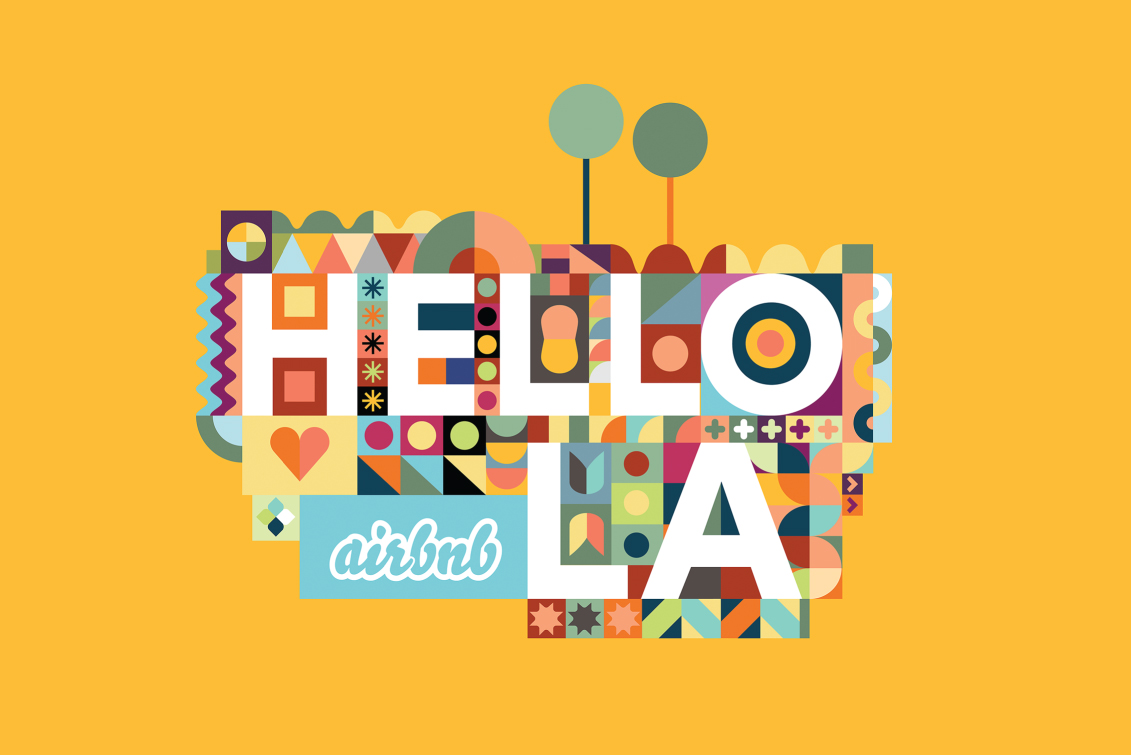
Airbnb Hello LA
Creative Director: Andrew Schapiro
Design: Matt Luckhurst
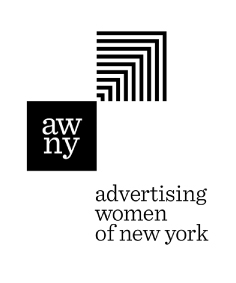
Advertising Women of New York Logo
Creative Director: Brian Collins
Design: Matt Luckhurst
What are the criteria for hiring at Airbnb? Do you see yourself in your hires?
I don't have a set criteria, but there are certain aspects of designers that excite me. I look for people with a strong work ethic and who have made surprising work, or people who give a shit and are weird. There are a lot of good designers in the world, but good design can be exceptionally boring. I'd rather take a chance on someone with a unique idea than someone that checks all the boxes. I look for corollaries in terms of work ethic and enthusiasm, and I do find people with an illustration background are more apt to experiment and get messy. Really, I look for people that intimidate me, who are younger, more interesting, and more talented than myself. There is a surprisingly large number of them.

Mary
Design: Matt Luckhurst